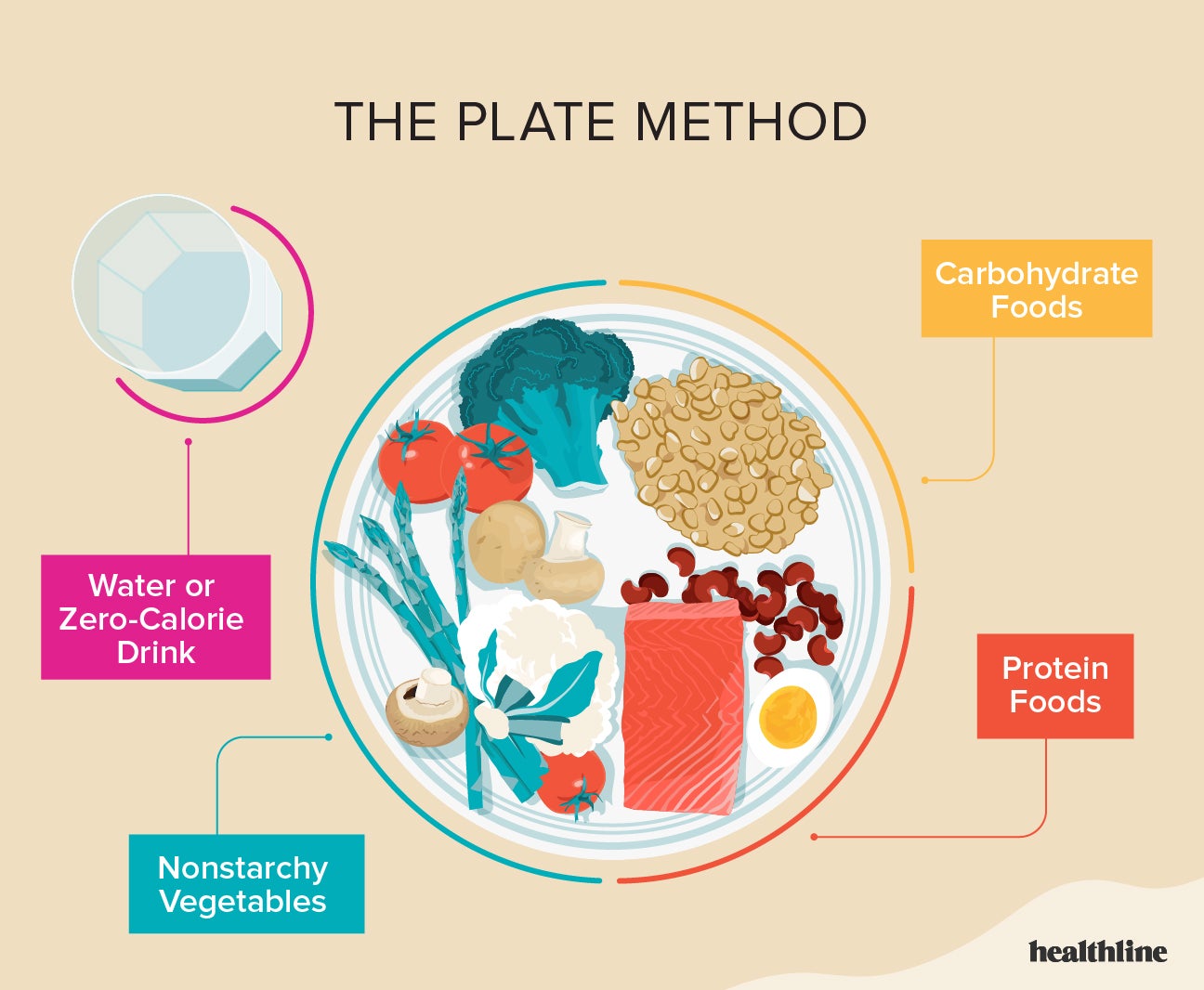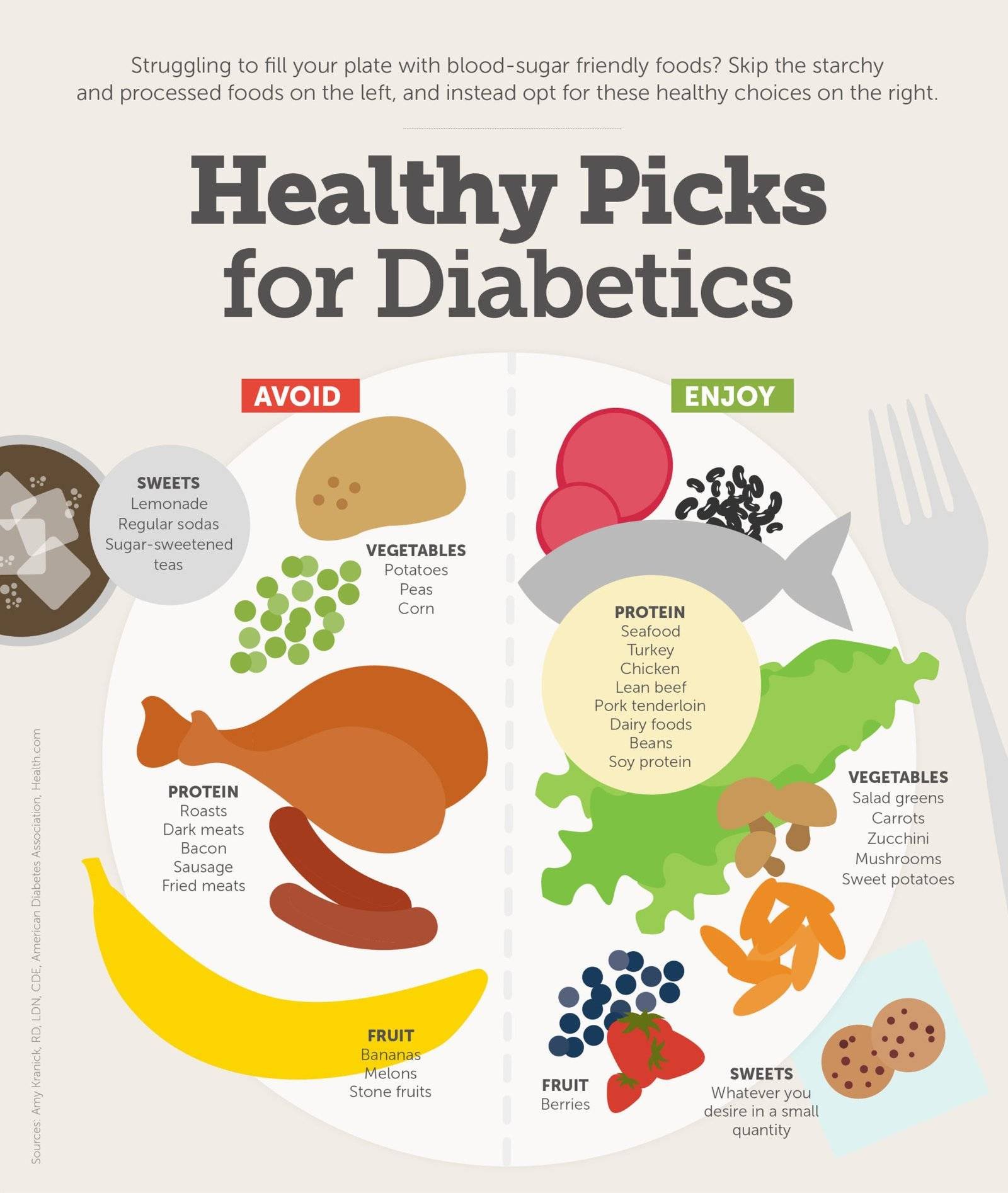When you have diabetes, focus on a diet rich in nonstarchy vegetables, high-fiber carbs, and lean proteins, while limiting processed meats, full-fat dairy, and sugary breakfast cereals. Additionally, prioritize healthy fats, fruits, and low-sodium foods in your meals to manage blood sugar levels and overall health.

Incorporating these dietary choices can help maintain balanced glucose levels and reduce the risk of diabetes-related complications. Diabetes affects millions of people worldwide, and managing the condition involves making important dietary choices. For those with diabetes, understanding which foods support overall health and help regulate blood sugar levels is crucial.
By incorporating the right foods into your diet and avoiding those that can cause spikes in blood sugar, you can effectively manage your condition and improve your overall well-being. We will explore a range of healthy food options for diabetics, as well as foods to avoid and useful tips for maintaining a nutritious diet while managing diabetes.
Credit: www.healthline.com
Understanding The Plate Method
A plate Method is a useful tool for diabetics to manage their meals. By dividing your plate into portions of non-starchy vegetables, whole grains, and lean proteins, it promotes healthy eating habits and helps control blood sugar levels.
Explanation Of The Plate Method
The Plate Method is a visual way to control portions and balance nutrients for individuals with diabetes. It divides a standard dinner plate into sections to guide meal planning.
Each section represents a food group: half the plate for non-starchy veggies, a quarter for carbohydrates, and a quarter for lean proteins.
Visual Representation Of The Plate Method
The Plate Method simplifies eating habits with a clear illustration of portion sizes for balanced nutrition. The visual aid helps diabetics understand how to structure their meals effectively.
Fruits And Vegetables
When it comes to managing diabetes, incorporating fruits and vegetables into your diet is crucial. Packed with essential vitamins, minerals, and fiber, fruits and vegetables can help stabilize blood sugar levels and promote overall well-being for diabetics.
Best Fruits For Diabetics
Fruits are a natural source of sweetness, but not all are suitable for diabetics. Opt for fruits with a lower glycemic index, such as berries, apples, and citrus fruits. Including these in your diet can help regulate blood sugar levels while providing essential nutrients. It’s important to consume fruits in moderation and pay attention to portion sizes to prevent spikes in blood sugar levels.
Incorporating Vegetables Into The Diabetic Diet
Vegetables are an essential part of a diabetic diet due to their low-calorie and high-nutrient content. Leafy greens, bell peppers, carrots, and green beans are excellent choices for diabetics as they are low in carbohydrates and high in fiber. Striving to fill half of your plate with non-starchy vegetables during meals can help control blood sugar levels and support weight management.
Diabetes-friendly Recipes
Discover delicious and nutritious diabetes-friendly recipes. From tasty meals to healthy snacks, these recipes focus on using the best foods for diabetics, including fruits, vegetables, and high-fiber carbohydrates. Whether you’re looking for a meal plan or a diet plan, there are plenty of options to explore to help manage diabetes while enjoying flavorful meals.
Cooking Ideas For Diabetes-friendly Meals
When it comes to managing diabetes, having a variety of healthy and delicious recipes is essential. Here are some cooking ideas that will help you create diabetes-friendly meals that are both nutritious and satisfying.
Healthy Snack Options For Diabetics
Snacking can be a challenge for individuals with diabetes, as it’s important to choose snacks that won’t spike blood sugar levels. Fortunately, there are plenty of healthy snack options that can keep you energized throughout the day without compromising your health goals.
Balanced Meal Planning
Introduction:
When it comes to managing diabetes, a balanced meal plan is of utmost importance. Planning your meals in advance can help you make healthier food choices and maintain stable blood sugar levels. In this section, we will discuss how to develop a weekly meal plan and provide you with tips for creating a balanced diet that is suitable for diabetics.
Developing A Weekly Meal Plan
Developing a weekly meal plan is an effective way to stay organized and ensure that you have nutritious meals throughout the week. Here are a few steps to get you started:
- Identify your nutritional needs: Consult with a registered dietitian or healthcare professional to determine your specific dietary requirements. This will help you create a meal plan that is tailored to your individual needs.
- List down your favorite foods: Make a list of foods that you enjoy and that are healthy for diabetics. This will help you incorporate these foods into your meal plan and make it more enjoyable.
- Plan your meals: Divide your meal plan into breakfast, lunch, dinner, and snacks. Aim to include a variety of foods from different food groups in each meal to ensure a well-rounded diet.
- Create a grocery list: Once you have planned your meals, create a grocery list based on the ingredients you need. This will save you time and prevent impulse purchases.
- Prep in advance: Take some time on the weekends to prep your meals or ingredients for the week ahead. This will make it easier and more convenient to stick to your meal plan during busy weekdays.
Tips For Creating A Balanced Diabetic Diet
Creating a balanced diet for diabetes is essential for managing blood sugar levels and overall health. Here are some tips to help you create a balanced diabetic diet:
- Incorporate non-starchy vegetables: Non-starchy vegetables such as leafy greens, peppers, carrots, and green beans should make up half of your plate. They are low in carbohydrates and high in essential vitamins and minerals.
- Choose high-fiber carbohydrate foods: Include carb foods that are high in fiber, such as brown rice, whole grains, beans, and fruits. These foods have a lower impact on blood sugar levels and provide sustained energy.
- Incorporate lean protein: Include protein foods like beans, nuts, pulses, eggs, meat, and fish in your meals. Protein helps stabilize blood sugar levels and contributes to feelings of fullness.
- Include healthy fats: Opt for healthier fat options, such as avocados, nuts, and olive oil. These fats are important for heart health and can help control blood sugar levels.
- Limit processed foods: Avoid processed meats and full-fat dairy products that are high in unhealthy fats and additives. Opt for fresh, whole foods whenever possible.
- Stay hydrated: Drink plenty of water throughout the day to stay hydrated and help regulate blood sugar levels. Limit your intake of sugary beverages and opt for water or unsweetened drinks instead.
By following these tips and creating a well-balanced meal plan, you can ensure that your diet is suitable for diabetes and supports your overall health and well-being.
Understanding Nutritional Needs
Understanding the nutritional needs of diabetics is crucial in managing blood sugar levels and overall health. A balanced diet rich in essential nutrients helps in controlling glucose levels, maintaining a healthy weight, and reducing the risk of complications associated with diabetes.
Essential Nutrients For Diabetics
Diabetics require a balanced intake of essential nutrients to manage their condition effectively. Some of the key nutrients include:
- Fiber: Helps in managing blood sugar levels and promoting digestive health.
- Protein: Aids in repairing and building tissues, and can help stabilize blood sugar levels.
- Healthy Fats: Essential for heart health and overall well-being.
- Vitamins and Minerals: Play a crucial role in various bodily functions and should be consumed through a diverse range of foods.
Impact Of Carbohydrates On Blood Sugar Levels
Carbohydrates have a direct impact on blood sugar levels and are an important consideration for diabetics. It’s essential to choose carbohydrates that have a minimal effect on blood glucose, such as:
- Nonstarchy Vegetables: These should make up a significant portion of the meal and are low in carbohydrates.
- High-Fiber Carbs: Whole grains, legumes, and fruits with a low glycemic index help in maintaining steady blood sugar levels.
Understanding how different nutrients and foods can affect blood sugar levels is essential for diabetics to make informed dietary choices for optimal health and well-being.
Foods To Avoid
Eating the right foods is crucial for managing diabetes. Equally important is knowing which foods to avoid to keep blood sugar levels stable.
Processed Foods To Steer Clear Of
Avoid processed meats, full-fat dairy products, and packaged snacks that often contain high levels of sugar and unhealthy fats.
High-sugar And High-fat Culprits
- Sugary beverages like soda
- Deep-fried foods
- Sweets and desserts
- White bread and pastries
:max_bytes(150000):strip_icc()/35-diabetes-friendly-dinners-2000-c05d90aa13cb4104aa6a0c10dd5d8832.jpg)
Best Practices For Managing Diabetes Through Diet
Discover the key to managing diabetes through a balanced diet with a focus on healthy foods for diabetics. Embrace non-starchy vegetables and high-fiber carb foods for a nutritious plate that supports your well-being and blood sugar levels. Incorporating these foods can positively impact your journey towards healthier living with diabetes.
Maintaining a healthy diet is crucial for effectively managing diabetes. The following practices can help individuals with diabetes better control their blood sugar levels and improve their overall well-being.
Exercise And Diet Synchronization
Regular exercise plays a vital role in managing diabetes alongside a balanced diet. Physical activity helps lower blood sugar levels and improve insulin sensitivity, promoting better health outcomes for individuals with diabetes.
Monitoring Blood Sugar Levels With Food Intake
Monitoring blood sugar levels before and after meals is essential for understanding how different foods impact glucose levels. By tracking this data, individuals with diabetes can make informed choices about their diet to maintain stable blood sugar levels throughout the day.
Diabetics need to prioritize whole foods, such as fruits and vegetables, lean proteins, and high-fiber grains. Additionally, avoiding processed sugars and unhealthy fats can contribute to better blood sugar control.
Credit: www.eatingwell.com

Credit: www.niddk.nih.gov
Frequently Asked Questions
What Foods Can Diabetics Eat Freely?
Diabetics can eat freely non-starchy vegetables, high-fiber carbs like brown rice and fruits, and protein-rich foods.
What Foods Are Good For Diabetes?
Opt for nonstarchy vegetables, high-fiber carbs (brown rice, whole grains, beans), and lean proteins.
What Is A Healthy Diet For A Diabetic?
A healthy diet for diabetics includes nonstarchy vegetables, high-fiber carbs, lean protein, and limited processed foods. It’s important to balance meals and snacks and control portion sizes. Avoid refined sugars and carb-rich snacks. Still, consult with a healthcare provider for personalized dietary guidelines.
What Foods To Avoid If You’re Diabetic?
Avoid processed meats, full-fat dairy, packaged snacks, white carbs, sweetened cereals, dried fruits, french fries, and high-fat cuts of meat. Instead, focus on nonstarchy vegetables, high-fiber carbs like brown rice and whole grains, lean proteins, fruits, and low-fat dairy.
Conclusion
Incorporating a variety of non-starchy vegetables, high-fiber carb foods, and healthy proteins into your meals can greatly benefit individuals with diabetes. Limiting or avoiding processed meats, full-fat dairy products, and white carbohydrates can help manage blood sugar levels. A balanced diet is essential for overall health.

I am a blogger for holistic wellness & longevity. With a passion for nutrition, fitness, & mindfulness, I’m dedicated to sharing insights on healthy living. Join my journey towards a vibrant life with practical tips & evidence-based advice. Embrace vitality and thrive with me!

